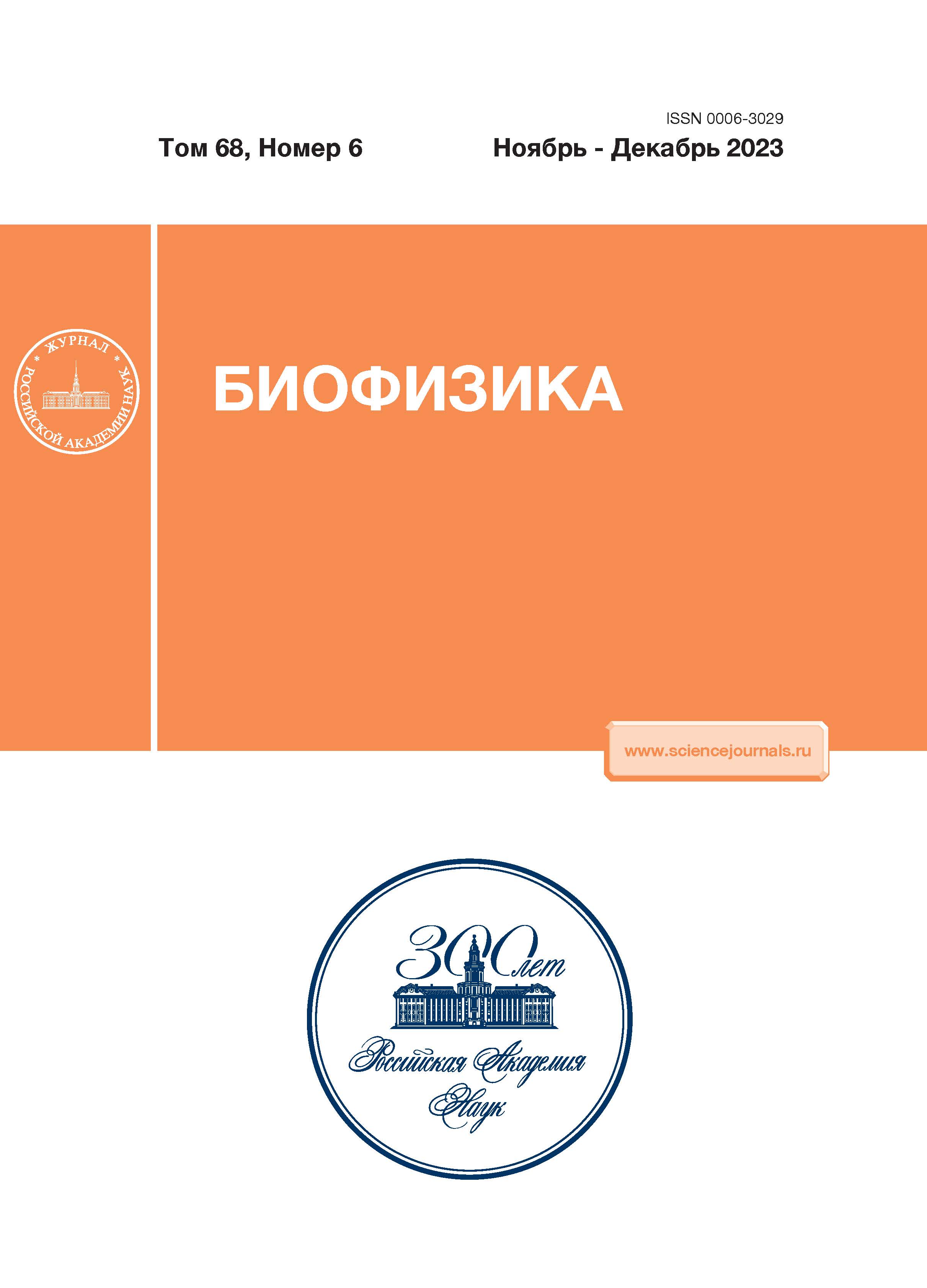Dependence of the oxygen release intensity from red cells on the degree of their clustering in sludges
- 作者: Ponomarev I.A1,2, Guria G.T.1,2
-
隶属关系:
- National Medical Research Center for Hematology, Ministry of Health of the Russian Federation
- Moscow Institute of Physics and Technology
- 期: 卷 68, 编号 6 (2023)
- 页面: 1210-1219
- 栏目: Articles
- URL: https://rjpbr.com/0006-3029/article/view/673245
- DOI: https://doi.org/10.31857/S0006302923060121
- EDN: https://elibrary.ru/ROWONW
- ID: 673245
如何引用文章
详细
An efficiency of oxygen release from red cells strongly depends on the regimes of their motion through microvessels. Mathematical model of oxygen transfer taking into account the red cells ability to form intravascular sludges has been constructed and studied. An analytical expression for the dependence of the oxygen release intensity on the size of erythrocyte sludges were derived. The possible significance of the obtained results for the express diagnostics of the red cell’s ability for an oxygen transmission is discussed.
作者简介
I. Ponomarev
National Medical Research Center for Hematology, Ministry of Health of the Russian Federation;Moscow Institute of Physics and TechnologyMoscow, Russia;Dolgoprudny, Moscow Region, Russia
G. Guria
National Medical Research Center for Hematology, Ministry of Health of the Russian Federation;Moscow Institute of Physics and Technology
Email: guria@blood.ru
Moscow, Russia;Dolgoprudny, Moscow Region, Russia
参考
- C. Wang and A. S. Popel, Math Biosci., 116 (1), 89 (1993). doi: 10.1016/0025-5564(93)90062-f
- E. Ortiz-Prado, J. F. Dunn, J. Vasconez, et al., Am. J. Blood Res., 9 (1), 1 (2019).
- A. Sircan-Kucuksayan, M. Uyuklu, and M. Canpolat, Physiol. Meas., 36, 2461 (2015). doi: 10.1088/09673334/36/12/2461
- A. M. Pilotto, A. Adami, R. Mazzolari, et al., J. Physiol., 600 (18), 4153 (2022). doi: 10.1113/JP283267
- N. Tateishi, N. Maeda, and T. Shiga, Circ. Res., 70 (4), 812 (1992). doi: 10.1161/01.RES.70.4.812
- A. G. Tsai, P. C. Johnson, and M.Intaglietta, Physiol. Rev., 83, 933 (2003). doi: 10.1152/physrev.00034.2002
- D. C. Poole, T. I. Musch, and T. D. Colburn, Eur. J. Appl. Physiol., 122, 7 (2022). doi: 10.1007/s00421-021-04854-7
- H. Kohzuki, S. Sakata, Y. Ohga, et al., Jap. J. Physiol., 50, 167 (2000). doi: 10.2170/jjphysiol.50.167
- N. Tateishi, Y. Suzuki, I. Cicha, and N. Maeda, Am. J. Physiol. - Heart and Circulatory Physiology, 281, H448 (2001). doi: 10.1152/ajpheart.2001.281.1.H448
- M. Uyuklu, H. J. Meiselman, and O. K. Baskurt, Clin. hemorheology and microcirculation, 41 (3), 179 (2009). doi: 10.3233/CH-2009-1168
- A. Semenov, A. Lugovtsov, P. Ermolinskiy, et al., Photonics, 9 (4), 1 (2022). doi: 10.3390/photonics9040238
- R. J. Tomanek, Anatom. Record, 305 (11), 3199 (2022). doi: 10.1002/ar.24951
- D. C. Poole and T. I. Musch, Function, 4 (3), zqad013 (2023). doi: 10.1093/function/zqad013
- A. Melkumyants, L. Buryachkovskaya, N. Lomakin, et al., Thrombosis and Haemostasis, 122 (01), 123 (2022). doi: 10.1055/a-1551-9911
- A. Gupta, M. V. Madhavan, K. Sehgal, et al., Nature Medicine, 26 (7), 1017 (2020). doi: 10.1038/s41591-020-0968-3
- S. Chien, in The red blood cell, Ed. by D. M. Surgenor (Acad. Press, London, New York, San Francisco, 1975), pp. 1031-1133.
- A. N. Beris, J. S. Horner, S. Jariwala, et al., Soft Matter, 17 (47), 10591 (2021). doi: 10.1039/D1SM01212F
- D. A. Fedosov, M. Peltomaki, and G. Gompper, Soft Matter, 10, 4258 (2014). doi: 10.1039/C4SM00248B
- N. Z. Piety, W. H. Reinhart, P. H. Pourreau, et al., Transfusion, 56, 844 (2016). doi: 10.1111/trf.13449
- T. J. McMahon, Front. Physiol., 10 (1417), 1 (2019). doi: 10.3389/fphys.2019.01417
- J. T. Celaya-Alcala, G. V. Lee, A. F. Smith, et al., J. Cerebral Blood Flow & Metabolism, 41 (3), 656 (2021). doi: 10.1177/0271678X20927100
- И. Н. Бронштейн и К. А. Семендяев, Справочник по математике для инженеров и учащихся втузов, (Совместное издание издательств "Тойбнер", Лейпциг, и "Наука", Москва, 1981), сс. 169-170.
- P. B. Canham, Journal of Theoretical Biology, 26, 61 (1970). doi: 10.1016/S0022-5193(70)80032-7
- T. Shiga, N. Maeda, and K. Kon, Crit. Rev. in Oncology/Hematology, 10 (1), 9 (1990). doi: 10.1016/1040-8428(90)90020-S
- T. Tajikawa, Y. Imamura, T. Ohno, et al., J. Biorheology, 27, 1 (2013). doi: 10.1007/s12573-012-0052-9
- T. W. Secomb, Annu. Rev. Fluid Mechanics, 49, 443 (2017). doi: 10.1146/annurev-fluid-010816-060302
- В. Л. Воейков, Успехи физиол. наук, 29, 55 (1998).
- A. Rabe, A. Kihm, A. Darras, et al., Biomolecules, 11, 1 (2021). doi: 10.3390/biom11050727
- Yu. I. Gurfinkel, O. A. Korol, and G. E. Kufal, SPIE, 3260, 232 (1998). doi: 10.1117/12.307096
- I. Cicha, Y. Suzuki, N. Tateishi, and N. Maeda, Am. J. Physiol. - Heart and Circulatory Physiology, 284 (6), H2335 (2003). doi: 10.1152/ajpheart.01030.2002
- Y. Arbel, S. Banai, J. Benhorin, et al., Int. J. Cardiol., 154 (3), 322 (2012). doi: 10.1016/j.ijcard.2011.06.116
- M. A. Elblbesy and M. E. Moustafa, Int. J. Biomed. Sci., 13 (2), 113 (2017).
- R. N. Pittman, Microcirculation, 20 (2), 117 (2013). doi: 10.1111/micc.12017
- A. E. Lugovtsov, Y. I. Gurfinkel, P. B. Ermolinskiy, et al., in Biomedical Photonics for Diabetes Research, Ed. by A. V. Dunaev and V. V. Tuchin (CRC Press, London, New York, 2023), pp. 57-79. DOI: 10.1201/ 9781003112099
- E. Hysi, R. K. Saha, and M. C. Kolios, J. Biomed. Optics, 17 (12), 125006 (2012). doi: 10.1117/1.JBO.17.12.125006
- T. H. Bok, E. Hysi, and M. C. Kolios, Biomed. Optics Express, 7 (7), 2769 (2016). doi: 10.1364/BOE.7.002769
补充文件









